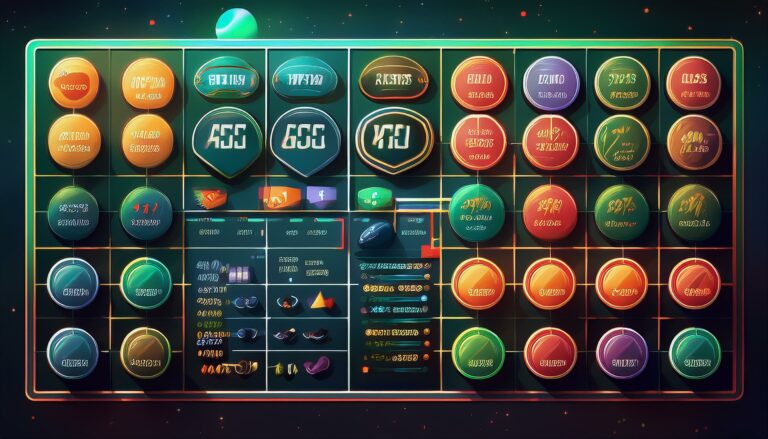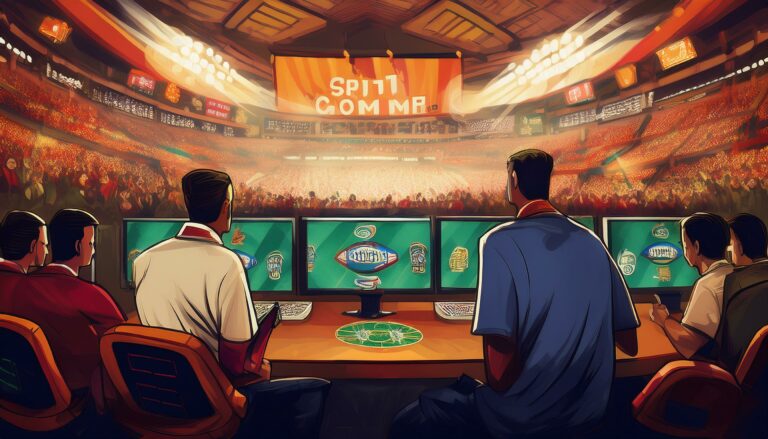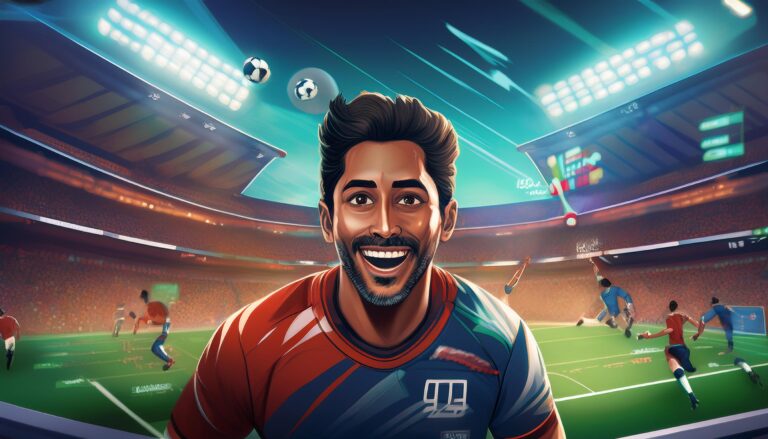Exploring LGBTQ+ Representation in Cricket
Online Cricket ID, 11xplay: One of the significant challenges faced by LGBTQ+ players in cricket is the prevalent homophobia and transphobia that exist within the sport. Despite advancements in LGBTQ+ rights in many parts of the world, cricket continues to struggle with creating a fully inclusive environment for players of all sexual orientations and gender identities. This often leads to LGBTQ+ players feeling isolated, discriminated against, and marginalized within the cricket community.
Additionally, the lack of visibility and representation of LGBTQ+ individuals in cricket further compounds the challenges faced by LGBTQ+ players in the sport. The absence of openly LGBTQ+ role models and leaders in cricket can make it difficult for players to feel accepted and supported, leading to feelings of alienation and invisibility. This lack of representation also contributes to the perpetuation of harmful stereotypes and misconceptions surrounding LGBTQ+ individuals in cricket.
Historical Barriers to Inclusion in Cricket
In the realm of cricket, historical barriers to inclusion have long plagued LGBTQ+ individuals seeking acceptance and recognition within the sport. Traditional norms and societal prejudices have often overshadowed the talent and potential of LGBTQ+ players, leading to discrimination and exclusion based on sexual orientation or gender identity.
The deeply ingrained culture of machismo and heteronormativity within cricket has posed significant challenges for LGBTQ+ individuals wishing to participate freely and authentically. The fear of backlash, ridicule, or even backlash within the cricket community has forced many LGBTQ+ players to hide their true selves or face the risk of marginalization and alienation.
Notable LGBTQ+ Figures in Cricket History
One prominent LGBTQ+ figure in cricket history is West Indies cricketer, Brian Lara. Known for his exceptional batting skills and record-breaking performances, Lara also made headlines when he came out as gay in a candid interview. Despite facing backlash and discrimination, Lara’s courage in being true to himself inspired many LGBTQ+ individuals within the cricket community.
Another notable LGBTQ+ figure is Australian cricketer, Megan Schutt. Schutt, a talented fast bowler, openly identifies as a lesbian and has been a vocal advocate for LGBTQ+ rights in sports. Her presence in the cricket world has helped pave the way for greater acceptance and inclusivity for LGBTQ+ players, challenging stereotypes and fostering a more welcoming environment for all individuals in the sport.
Impact of LGBTQ+ Visibility in Cricket
The visibility of LGBTQ+ individuals in cricket has the power to challenge stereotypes and break down barriers within the sport. When LGBTQ+ players are represented and celebrated, it sends a message of acceptance and inclusivity to fans, fellow athletes, and aspiring cricketers who may be struggling with their own identities. This visibility plays a crucial role in creating a more welcoming environment within the cricket community, paving the way for individuals to feel safe and supported in being their authentic selves.
Furthermore, the increased visibility of LGBTQ+ individuals in cricket helps to foster a culture of diversity and respect. By showcasing the talent and achievements of LGBTQ+ players, the sport becomes a platform for promoting equality and understanding. This visibility not only elevates the voices of LGBTQ+ individuals but also highlights the importance of embracing differences and promoting a more inclusive sporting environment for all.
Initiatives Promoting Inclusivity in Cricket
Cricket has seen a growing push towards inclusivity for LGBTQ+ players in recent years. Several initiatives have been launched to create a more welcoming environment within the sport. These efforts aim to break down barriers and stereotypes that have historically excluded LGBTQ+ individuals from fully participating in cricket.
One key initiative is the implementation of anti-discrimination policies and training programs across cricket organizations. By promoting education and awareness, these initiatives help to foster a culture of respect and understanding for LGBTQ+ players. Additionally, the creation of LGBTQ+ support networks within cricket communities provides a safe space for players to seek guidance and solidarity, further enhancing inclusivity in the sport.
Media Representation of LGBTQ+ Athletes in Cricket
Media representation of LGBTQ+ athletes in cricket plays a pivotal role in shaping societal perceptions and attitudes towards diversity and inclusion within the sport. The portrayal of LGBTQ+ players in the media can either reinforce stereotypes and biases or challenge them by showcasing their talent, dedication, and resilience on the field. It is crucial for media outlets to provide fair and accurate coverage of LGBTQ+ athletes in cricket to promote understanding, acceptance, and celebration of their contributions to the game.
However, media representation can often be skewed or limited when it comes to LGBTQ+ athletes in cricket. Stereotypes, discrimination, and lack of visibility still persist in many instances, which can lead to feelings of isolation and exclusion for LGBTQ+ players. By amplifying the voices and stories of LGBTQ+ athletes in cricket through positive and inclusive representation, the media has the power to inspire change and create a more welcoming and inclusive environment for all individuals within the cricketing community.
Support Systems for LGBTQ+ Players in Cricket
Creating a safe and inclusive environment for LGBTQ+ players in cricket involves establishing robust support systems within the sport. These systems encompass a range of resources including mentorship programs, confidential counseling services, and LGBTQ+ allies trained to provide guidance and advocacy. By fostering a culture of acceptance and understanding, these support systems play a crucial role in promoting mental well-being and encouraging LGBTQ+ individuals to fully participate in the sport without fear of discrimination.
Moreover, initiatives that offer educational workshops and awareness training to players, coaches, and staff further enhance the support network for LGBTQ+ individuals in cricket. These programs aim to educate stakeholders on sensitive issues, promote empathy, and challenge harmful stereotypes or prejudices that may exist within the cricket community. By equipping individuals with the knowledge and skills to address LGBTQ+ concerns effectively, these support systems contribute to cultivating a more inclusive and diverse sporting environment for all players.
Intersectionality in LGBTQ+ Representation in Cricket
In the realm of cricket, the intersectionality of LGBTQ+ representation brings to light a complex web of identities and experiences that shape the narratives of players within the community. This intersection between sexual orientation, gender identity, race, ethnicity, and other social factors underscores the diversity within LGBTQ+ individuals involved in the sport. It is essential to recognize and celebrate this diversity to foster a more inclusive and supportive environment for all cricket players, regardless of their backgrounds.
By acknowledging the intersecting identities of LGBTQ+ individuals in cricket, we can better understand the unique challenges and barriers they face. From dealing with discrimination based on both their sexual orientation and other identity markers to navigating the complexities of inclusion within the cricketing world, intersectionality sheds light on the multifaceted nature of LGBTQ+ representation in the sport. Embracing this intersectionality not only promotes a more inclusive culture within cricket but also paves the way for greater solidarity and support among LGBTQ+ players and allies.
Future of LGBTQ+ Inclusivity in Cricket
As the world progresses towards greater acceptance and inclusivity, the future of LGBTQ+ inclusivity in cricket appears promising. The sport has the potential to become a more welcoming space for individuals of diverse sexual orientations and gender identities. By implementing policies and programs that support LGBTQ+ players and fans, cricket can foster a more inclusive environment where everyone feels safe and valued.
It is crucial for cricketing organizations, players, coaches, and fans to actively challenge discrimination and stereotypes, creating a culture of respect and understanding within the sport. By promoting LGBTQ+ inclusivity in cricket at all levels, from grassroots to professional leagues, the sport can set a positive example for other sports and industries. Embracing diversity and celebrating the talents of individuals regardless of their sexual orientation or gender identity will not only benefit the sport but also contribute to a more inclusive society overall.
Celebrating LGBTQ+ Success Stories in Cricket
In recent years, there have been significant strides in promoting LGBTQ+ inclusivity in the world of cricket. A notable success story is that of Megan Schutt, an Australian cricketer who came out as gay in 2019. Schutt, a prominent bowler for the Australian women’s cricket team, has been an inspiration for many LGBTQ+ individuals in the sporting world.
Another success story is that of Steven Davies, the first openly gay cricketer to play for the English national team. Davies’ decision to come out publicly in 2011 paved the way for greater acceptance and representation of LGBTQ+ players in the cricketing community. His courage and talent on the field have solidified his place as a role model for aspiring LGBTQ+ athletes in cricket.
What are some of the challenges faced by LGBTQ+ players in cricket?
LGBTQ+ players in cricket often face discrimination, lack of support, and fear of coming out due to the prevalent homophobia in sports.
What historical barriers have prevented LGBTQ+ inclusion in cricket?
Traditional gender norms and stereotypes have contributed to the exclusion of LGBTQ+ individuals in cricket, as well as the lack of visibility and representation in the sport.
Who are some notable LGBTQ+ figures in cricket history?
Some notable LGBTQ+ figures in cricket history include Steven Davies, Megan Schutt, and Elyse Villani, who have been vocal about their identities and advocated for LGBTQ+ inclusion in the sport.
How has LGBTQ+ visibility impacted the world of cricket?
LGBTQ+ visibility in cricket has helped challenge stereotypes, promote inclusivity, and create a safer environment for LGBTQ+ players to participate in the sport authentically.
What initiatives are being implemented to promote inclusivity for LGBTQ+ players in cricket?
Various organizations and initiatives are working towards promoting inclusivity for LGBTQ+ players in cricket, such as creating safe spaces, providing support systems, and advocating for policy changes.
How are LGBTQ+ athletes portrayed in the media within the cricket world?
LGBTQ+ athletes in cricket are often portrayed positively in the media, with a focus on their accomplishments on the field as well as their courage in being open about their identities.
What support systems are available for LGBTQ+ players in cricket?
Support systems for LGBTQ+ players in cricket include LGBTQ+ sports organizations, allies within the cricket community, and mental health resources tailored to LGBTQ+ individuals.
How does intersectionality play a role in LGBTQ+ representation in cricket?
Intersectionality acknowledges that LGBTQ+ individuals may face discrimination based on multiple identities, such as race, gender, or ability, and highlights the importance of addressing these intersections in promoting inclusivity.
What does the future hold for LGBTQ+ inclusivity in cricket?
The future of LGBTQ+ inclusivity in cricket looks promising, with increasing awareness, advocacy efforts, and support systems working towards creating a more inclusive and welcoming environment for all players.
Can you provide some examples of LGBTQ+ success stories in cricket?
Some LGBTQ+ success stories in cricket include players who have overcome challenges, achieved great success, and inspired others with their talent and courage in being open about their identities.







